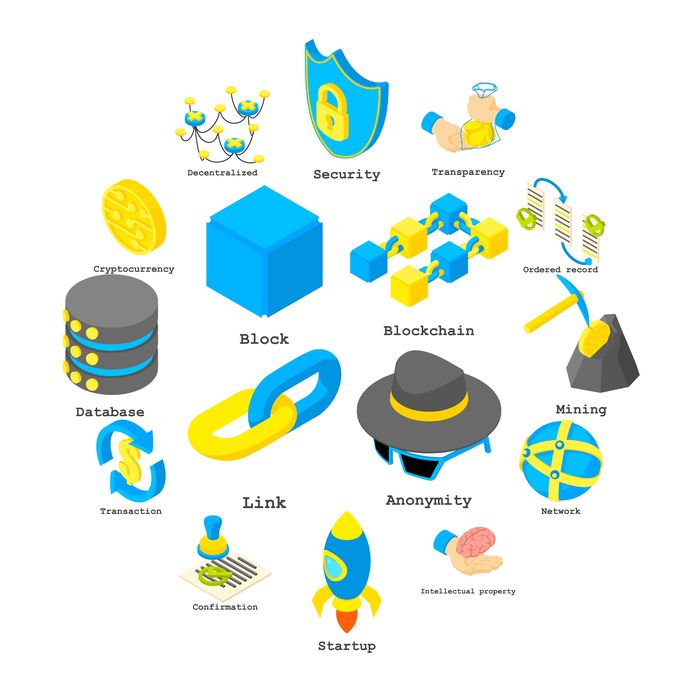Credits: Published by J.P. Morgan
There is a growing realization that distributed ledger technology — popularly known as blockchain — will bring a radical shift in the way we think about financial assets and the way the financial industry will operate in the future. The blockchain journey is likely to be long and the outcome is uncertain, but a consensus is forming that it is the real deal. Disregarding it is a risk.
In this joint report with management consultant Oliver Wyman, we argue that asset managers need to get off the sidelines and take the initiative to understand and embrace blockchain. The report is designed to serve as a guide to how the technology may evolve, the impact it may have on asset managers and the action they can take. See our four main points below.
1. Blockchain is the real deal
Blockchain-related interest and investment have reached critical mass, and the technology has shown itself to be capable of driving major change.
By enforcing convergence on common data standards and eliminating the need for a central authority to hold a “golden record,” we can reduce reconciliation and facilitate seamless transfer of digital assets.
Rather than presenting a “Blockchain 101,” we instead make the impacts of a transition to blockchain infrastructure approachable and tangible, clearing up common myths and demonstrating how this technology has the potential to reshape financial markets and ultimately the client experience.
Four waves of anticipated blockchain deployments
| Wave | Advancements | Examples in development |
|---|---|---|
| 1 Information sharing 2016-19 |
|
 |
| 2 Data solutions 2017-25 |
|
 |
| 3 Critical infrastructure 2020-30 |
|
 |
| 4 Fully decentralized Uncertain |
|
 |
© J.P. Morgan and Oliver Wyman
2. The opportunity for asset managers
Blockchain can help asset managers tackle many of the challenges they face today: managing data; providing solutions, not just products; and providing continuing service value to clients in a changing competitive landscape.
Asset managers can achieve material cost benefits across front-, middle- and back-office activities through a reduction in data manipulation, the decommissioning of legacy infrastructure and lower frictional costs of investment.
Revenue opportunities will grow out of the improved data sources, greater liquidity and lower frictional costs fostered by blockchain. Asset managers will be able to serve clients in new ways, for example, with real-time reporting or alternate trading strategies.
Ultimately, end investors may be the greatest beneficiaries, as asset managers and other providers compete by offering improved propositions and passing on savings.
Broad potential for cost savings

*Note: individual differences exist driven by size, business scope, region, diversification etc.
Drivers of cost savings and example applications
| Sales & Marketing |
|
|---|---|
| Ops |
|
| IT |
|
| Portfolio Mgmt |
|
| Finance |
|
| Risk Mgmt |
|
| Overheads | Not applicable |
Source: Oliver Wyman proprietary data and analysis
© J.P. Morgan and Oliver Wyman
3. Time to get off the sidelines
Many asset managers have taken a wait-and-see approach, under the assumption that any eventual cost savings or opportunities will flow downstream. We believe this is a mistake.
Early engagement is essential for asset managers to drive prioritization of the right issues and use cases; competitive advantage can be gained from working with the right partners early on to develop real world solutions.
Partners and regulators require the input of asset managers to ensure suitable governance and data management standards, as well as help in navigating design implications.
Accrual of blockchain benefits
| Major benefits | Limited benefits |
© J.P. Morgan and Oliver Wyman
4. The CxO playbook
Blockchain is quickly becoming a C-suite issue for asset managers, and the CEO, CTO and COO all have roles to play.
Role: The CEO needs to outline the vision for how the organization engages with and adopts blockchain. The priority placed on blockchain will depend on the size and nature of the firm, and this needs to be understood. From this basis, the CEO can mobilize the management team and make the right level of investment.
Five suggested actions:
Assess and understand the potential impact of blockchain on your organization.
- Are you personally well-educated on blockchain?
- What level of change can blockchain bring to your business and organization?
- Do you understand what can accelerate change? What are the hurdles/open questions? What is the timing?
Outline the longer term vision and the ambition for your organization.
- Where do you want to be a first mover, a fast follower or wait for industry solutions?
- What level of resourcing do you want to commit (e.g., investment budget, management bandwidth)?
- What areas of impact do you want to focus on (e.g., technology development, regulatory reporting)?
- Are there strategic partners you intend to engage (across your competitor and ecosystem community)?
Determine where blockchain falls on the priority scale for your leadership team, especially vis-à-vis other innovative technologies.
- Does blockchain make the top five focus areas in the next five years? Top 10?
- If a potential Top 10 priority, who is leading blockchain thinking for your organization?
- Do you need to spend significant resources now, or can you wait a few years?
Encourage open and transformative thinking, particularly among young tech teams.
- What is the forum for blockchain to be discussed and ideas to be raised with you?
- Are you allowing creative liberty and time for senior leaders to explore the radical transformative impact of blockchain technology?
- Are you driving the right balance between thinking/learning about blockchain as well as executing on potential ideas?
Develop an external engagement approach.
- Are there select partners in your peer group that may allow you to share thinking and build use cases together?
- Which consortia partnerships may make sense for you to pursue?
- How public do you want to be on your ambition level? How important is it for you to be perceived as a front runner among your peers?
The CTO needs to lead understanding and development of blockchain capabilities as part of the broader FinTech agenda.
The COO needs to understand blockchain applications and how to extract their benefits, while ensuring blockchain makes up part of a coherent target operating model.
The consequences of blockchain will vary for individual asset managers — your firm’s vision and approach is a unique decision. This report offers our perspectives on the potential of blockchain for asset managers and our CxO playbook as a guide to help you begin the journey. As we highlight, there are many considerations to evaluate.
It is our belief that distributed ledger technology is not only credible, but creates opportunities for asset managers and has the potential to change the way they do business. Just as it was impossible to predict the impact the internet would have on financial services, it is impossible to know with certainty how markets will look or operate when distributed ledgers and cryptographically secured digital assets are the norm. However, recognizing the impact that FinTech innovation continues to have on the industry, it is pragmatic to be well-informed and organized to unlock economic advantage in an increasingly digital world.
Download link for the J.P. Morgan Report
Blockchain research to support Sustainable Development Goals





